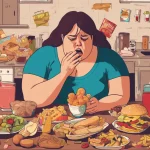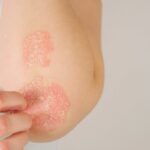If you are experiencing the regular urge to pee whilst also experiencing severe dehydration, then you might be wondering what is going on. One thing you might not have considered is the fact that you might have diabetes.

Now, there are plenty of other reasons why you might be drinking a lot. Some of these are: not drinking enough water, eating too much salty or spicy food or simply sweating a lot through exercise.
However, if these have been ruled out, then diabetes could be the cause.
But how can you tell whether your excess peeing is because of diabetes? What other symptoms are there are this condition?
How can you prevent excessive thirst and urination? Well, if you are concerned about these symptoms, then we have some advice that can really help you.
What Is The Relationship Between Diabetes And Thirst?
If you have a high level of glucose in your blood, then this could be the cause of your feeling thirsty all the time. Urination and thirst are often one of the telltale signals that you are having a spike in blood sugar.
One of the main hallmarks of diabetes is that you cannot process sugar from foods in the same way as a normal person can. This results in an excess of sugar in your bloodstream, which can often lead to serious complications.
Your kidneys will be doing a lot of the work to get rid of this excess sugar, which will often put a strain on this organ. This is because it will be working a lot more than it usually would.
The kidneys get rid of this excess sugar by making the body urinate a lot more than it normally would.
So basically, the more sugar there is in your bloodstream, the more urine your body will pass to get rid of it.
This is the reason why you’ll be feeling dehydrated. The body will have used a lot more of its water than normal, resulting in increased thirst.
Your body will even use up the water in your muscles to flush out the buildup of sugar.
Your brain will start to panic and tell your body to consume a lot more water than usual. This will create a cycle of increased drinking and urination.
This will continue until you restore the natural levels of sugar in your bloodstream.
What Are The Types Of Diabetes?
There two types of diabetes: type 1 and type 2. If they are left unchecked, then they can result in some pretty serious symptoms. They are both defined by the body’s inability to regulate blood sugars.
Glucose is the main thing that your body requires to fuel itself. Whether it is the muscles or your organs, you will need glucose to regulate how they function.
The way glucose is processed is through the cells in your body, where they will be burned for energy. The method of getting the glucose into your cells is through insulin.
If your insulin levels are low then the glucose will stay in the blood, having to be gotten rid of through urine.
Type 1 diabetes is where your body stops producing insulin entirely. This can happen to adults and children and is classed as an autoimmune disorder.
Type 2 is a lot more common than type 1 and normally occurs only in adults. This is where your body can only produce low amounts of insulin, which is called inulin resistance.
You might have to eat a sugar-rich diet or take insulin shots.

What Are The Other Symptoms Of Diabetes?
There are also other symptoms that you might be experiencing in conjunction with excess thirst and urination that could be a sign that you have diabetes.
- Dry mouth
- Fatigue
- Frequent hunger
- Tender gums
- Wounds heal slower
- Repeated infections
- Changes in mood
- Irritability
- Weight loss (this is usually the most common in type 1 diabetes)
- Tingling or numbness in the toes and feet
Typically, the symptoms of type 1 diabetes will occur a lot quicker than the symptoms of type 2. If you leave your diabetes unchecked, then it could lead to more severe symptoms further down the line.
How Can You Treat Diabetes?
Unfortunately, type 1 diabetes cannot be cured, only treated. Usually, this is done with insulin shots that are specifically measured based on the severity of diabetes that you have.
Type 2 diabetes can be managed a lot better and usually involved medication. This medication is not only designed to help your body produce more insulin, but also helps your body to absorb sugar better.
You can also treat type 2 diabetes with a better diet and you’ll notice a great decrease in your symptoms if you avoid fatty foods.
This means that your blood sugars will be stable and you should not experience too many spikes and dips.
How Best To Monitor Your Diabetes?
A good diet and a strict exercise routine are two of the best methods that you can naturally regulate your diabetes. Implement some of the following routines to monitor and regulate your glucose levels:
- Monitor your blood levels – if you check your blood levels before and after every meal, then you can be certain of avoiding and tracking any spikes.
- Journaling – if you can keep track of your glucose levels over a long period, then you’ll be able to better identify certain triggers.
- Create a diet plan – again, control will be the most important measure for restricting spikes and dips.
- Fiber and vegetables – make sure that you have plenty of greens and fiber in your diet, as this will help to control your glucose levels.
- Exercise daily – even if this is low-intensity exercise, make sure that you make time to walk or cycle somewhere for at least 30 minutes every day. If you cannot do it every day, then every other day.
Conclusion
We hope that this guide to diabetes has helped you to identify some of the symptoms as well as how to manage your condition if you do have type 1 or type 2 diabetes.
- Understanding Male Reproductive Health: A Complete Guide - February 2, 2025
- Simple Healthy Skin Habits for Radiant Skin - December 6, 2024
- Unlocking the Connection Between Nutrition and Mental Health - December 3, 2024








